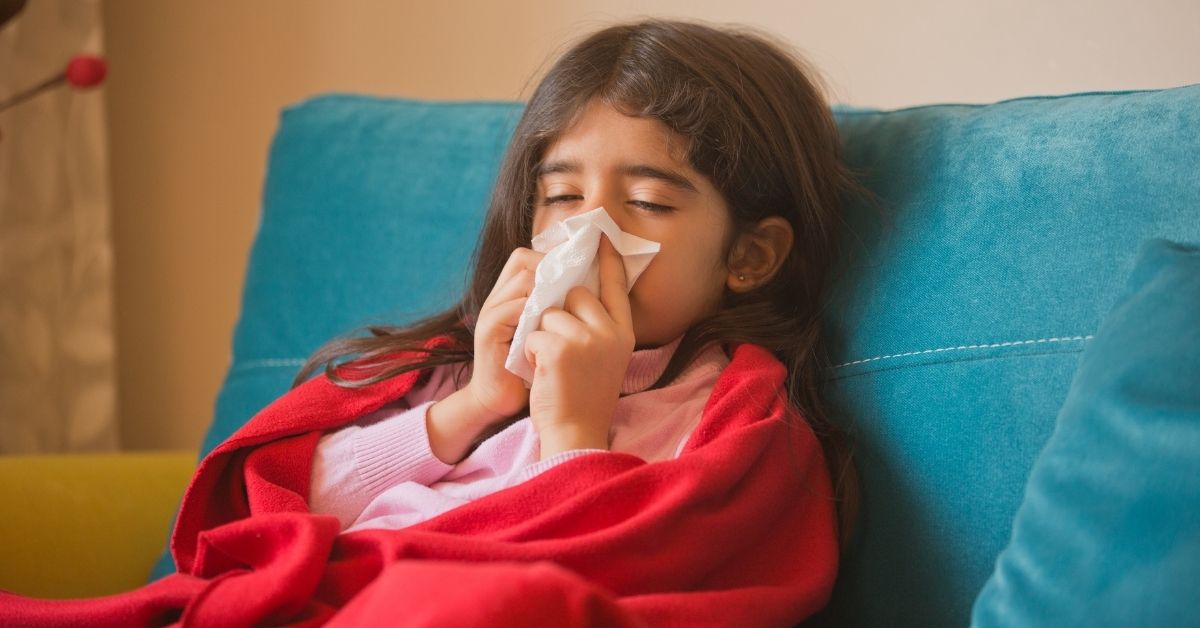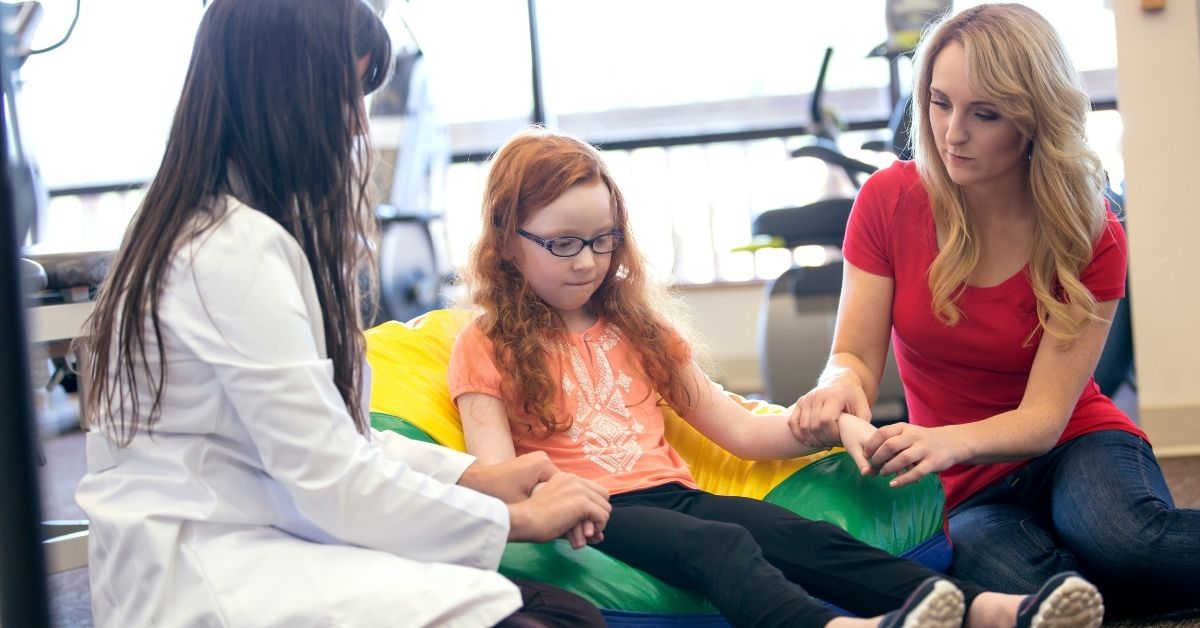
Author: Alison L. Christy, MD, PhD
Providence Pediatric Neurology at St. Vincent Medical Center – Portland, Oregon
Reviewed: July 2021
SUMMARY
Transverse myelitis (TM) is an inflammatory disease of the spinal cord. It almost always begins after a child is sick with a viral infection. Damage to the spinal cord causes weakness, paralysis, numbness, problems with urination, and pain.
Children usually recover after weeks or months but may have lasting symptoms. Usually, TM happens only once and does not occur again. Sometimes TM can be the first sign of a disease that needs lifelong treatment, like neuromyelitis optica (NMO) or multiple sclerosis (MS).
JUMP TO
Disorder Overview
DESCRIPTION
The immune system is made up of immune cells. Immune cells usually fight off threats from the outside, such as viruses, bacteria, and fungi. In autoimmune diseases, immune cells attack the healthy cells of the body.
The nerves of the body are like electrical wires. They have a coating on the outside called myelin. In TM, immune cells attack the myelin coating on the nerves in the spinal cord.
The spinal cord connects the brain to the rest of the body. The nerves in the spinal cord bring information about movement from the brain to the body and bring information about sensation from the body to the brain. This means movement and sensation are usually affected by TM.
The spinal cord nerves also bring information to and from the gut, the bladder, and the genitals. TM can cause problems with peeing, stooling, or sexual function.
The top of the spinal cord (the brain stem) also controls breathing, heart rate, digestion, and blood pressure. TM that affects the brain stem may cause problems with these basic functions.


SIGNS AND SYMPTOMS
Symptoms of TM can include:
- Weakness or numbness of one part of the body
- Cramping or tingling of one part of the body
- Tremor in one part of the body
- Problems with urination or stooling (including accidents and difficulty peeing)
- Pain
- Autonomic dysfunction (problems with breathing, heart rate, and blood pressure)
Muscles made weak by TM may feel loose and floppy at first (flaccid). However, they can later become tight and difficult to move (spastic).
CAUSES
In many cases, TM occurs after an illness. The illness may be a cold with runny nose and cough. It may be a stomach bug with vomiting and diarrhea. We think that a viral infection may trigger the attack. The infection seems to cause the body’s immune system to damage the myelin sheath around nerves in the spinal cord.
TM has been seen in very rare cases after a diagnosis of COVID-19 in both adults and children. TM can also happen after a vaccination, but this is extremely rare.
Sometimes TM can be a part of a disease that might affect the rest of the body, like
- Neuromyelitis optica (NMO)
- Multiple sclerosis (MS)
- A rheumatologic disorder, such as systemic lupus erythematosus (SLE) or Sjögren’s syndrome.
When no cause for a case of TM is found, it is called idiopathic transverse myelitis. Most cases will be considered idiopathic.
Transverse myelitis does not seem to be genetic or run in families.


DIAGNOSIS AND LABORATORY INVESTIGATIONS
A doctor may be concerned about TM when a picture of the brain or spinal cord looks abnormal. Pictures of the brain are created with magnetic resonance imaging, or MRI. MRI can show areas where myelin has been damaged. The damaged areas are called lesions. A medicine called contrast may be used to help see lesions. Lesions in brainstem or spinal cord may point to TM.
Sometimes, the doctor will do more tests to confirm a diagnosis.
These may include:
Blood tests
A lumbar puncture
If a child has TM, a doctor may send the child to an ophthalmologist (eye doctor) or neuro-ophthalmologist (brain-eye-doctor). These specialists can look for signs of optic neuritis. This is important because the combination of TM and optic neuritis points to another diagnosis: neuromyelitis optica (NMO). NMO may be treated with different medications than would TM on its own.
TREATMENT AND THERAPIES
Treatments for an Acute Attack
If a child has an attack of TM, a doctor may offer medications that change the way the immune system works. These can include:
- Steroids
- Therapeutic plasma exchange, or plasmapheresis
- Immunoglobulin G, or antibodies from other people, also called IVIG (this is rare)
Other ways to support a patient can include:
Antibiotics and Antivirals
Intubation or feeding tubes
Usually, children will not need long-term treatment to prevent future episodes of TM.
Other Treatments
Other medications may help with symptoms of TM such as:
- Problems with urination
- Constipation
- Pain
During and after recovery from TM, patients may receive physical therapy to help them improve and regain skills.


OUTLOOK
Most recovery happens during the first 3-6 months after the disease starts. Physical therapy can be helpful with this recovery.
Most people with TM will recover fully. Some will continue to have mild weakness or problems with sensation. Rarely, some people have severe lasting weakness or problems with urination after TM.
Usually, TM occurs once and never happens again. If TM does happen more than once, it may mean that there is a problem with the immune system, like neuromyelitis optica (NMO) or multiple sclerosis (MS). A doctor may need to do more testing in this case.
Children with TM may need physical therapy or occupational therapy. This can improve walking and movement.
TM does not affect the way people think or communicate. However, an illness like this can be extremely stressful. Some children may need counseling or therapy during or after their illness.


Resources
Siegel Rare Neuroimmune Association
The Siegel Rare Neuroimmune Association (SRNA) is a not-for-profit international organization dedicated to the support of children, adolescents, and adults with a spectrum of rare neuroimmune disorders, including: Acute Disseminated Encephalomyelitis (ADEM), Acute Flaccid Myelitis (AFM), MOG Antibody Disease (MOGAD), Neuromyelitis Optica Spectrum Disorder (NMOSD), Optic Neuritis (ON) and Transverse Myelitis (TM).
Their mission is to support individuals living with rare neuroimmune diagnoses and their families, promote awareness to empower patients, families, clinicians, and scientists, through education programs (such as the SRNA Quality of Life Family Camp for children and their families diagnosed with a rare neuroimmune disorder) and publications and, to build a collaborative and dedicated clinical care network and help advance scientific understanding and research.


Child Neurology Foundation (CNF) solicits resources from the community to be included on this webpage through an application process. CNF reserves the right to remove entities at any time if information is deemed inappropriate or inconsistent with the mission, vision, and values of CNF.
Research
ClincalTrials.gov for Transverse Myelitis are clinical trials that are recruiting or will be recruiting. Updates are made daily, so you are encouraged to check back frequently.
ClinicalTrials.gov is a database of privately and publicly funded clinical studies conducted around the world. This is a resource provided by the U.S. National Library of Medicine (NLM), which is an institute within the National Institutes of Health (NIH). Listing a study does not mean it has been evaluated by the U.S. Federal Government. Please read the NLM disclaimer for details.
Before participating in a study, you are encouraged to talk to your health care provider and learn about the risks and potential benefits.
The information in the CNF Child Neurology Disorder Directory is not intended to provide diagnosis, treatment, or medical advice and should not be considered a substitute for advice from a healthcare professional. Content provided is for informational purposes only. CNF is not responsible for actions taken based on the information included on this webpage. Please consult with a physician or other healthcare professional regarding any medical or health related diagnosis or treatment options.
References
Chitnis T. Pediatric Central nervous system demyelinating diseases. Continuum: Lifelong Learning in Neurology. 2019 25(3)793-814. PMID: 31162317; https://doi.org/10.1212/con.0000000000000730
Krishnan C and Greenberg B. Transverse Myelitis. In: UpToDate, Dashe JF (Ed), UpToDate, Waltham, MA.
Ganelin-Cohen E, Konen O, Nevo Y, et al. Prognostic parameters of acute transverse myelitis in children. Journal of Child Neurology. 2020; 35(14)999-1003. PMID: 32808576; https://doi.org/10.1177/0883073820947512
Guthy Jackson Charitable Foundation. Neuromyelitis Optica. https://guthyjacksonfoundation.org/
Journal of Child Neurology, 2021. What your pediatric neurologist wants you to know: Neuroimmunology. [podcast] SAGE Neuroscience and Neurology. Available at: http://sageneuroscience.sage-publications.libsynpro.com/jcn-what-your-pediatric-neurologist-wants-you-to-know
National Multiple Sclerosis Society. Transverse Myelitis (TM). https://www.nationalmssociety.org/What-is-MS/Related-Conditions/Transverse-Myelitis
National Institute of Neurological Disorders and Stroke. Transverse Myelitis Fact Sheet. https://www.ninds.nih.gov/disorders/patient-caregiver-education/fact-sheets/transverse-myelitis-fact-sheet
Siegel Rare Neuroimmune Association. Transverse Myelitis (TM). https://wearesrna.org/living-with-myelitis/disease-information/transverse-myelitis/
I am text block. Click edit button to change this text. Lorem ipsum dolor sit amet, consectetur adipiscing elit. Ut elit tellus, luctus nec ullamcorper mattis, pulvinar dapibus leo.
Thank you to our 2023 Disorder Directory partners:





